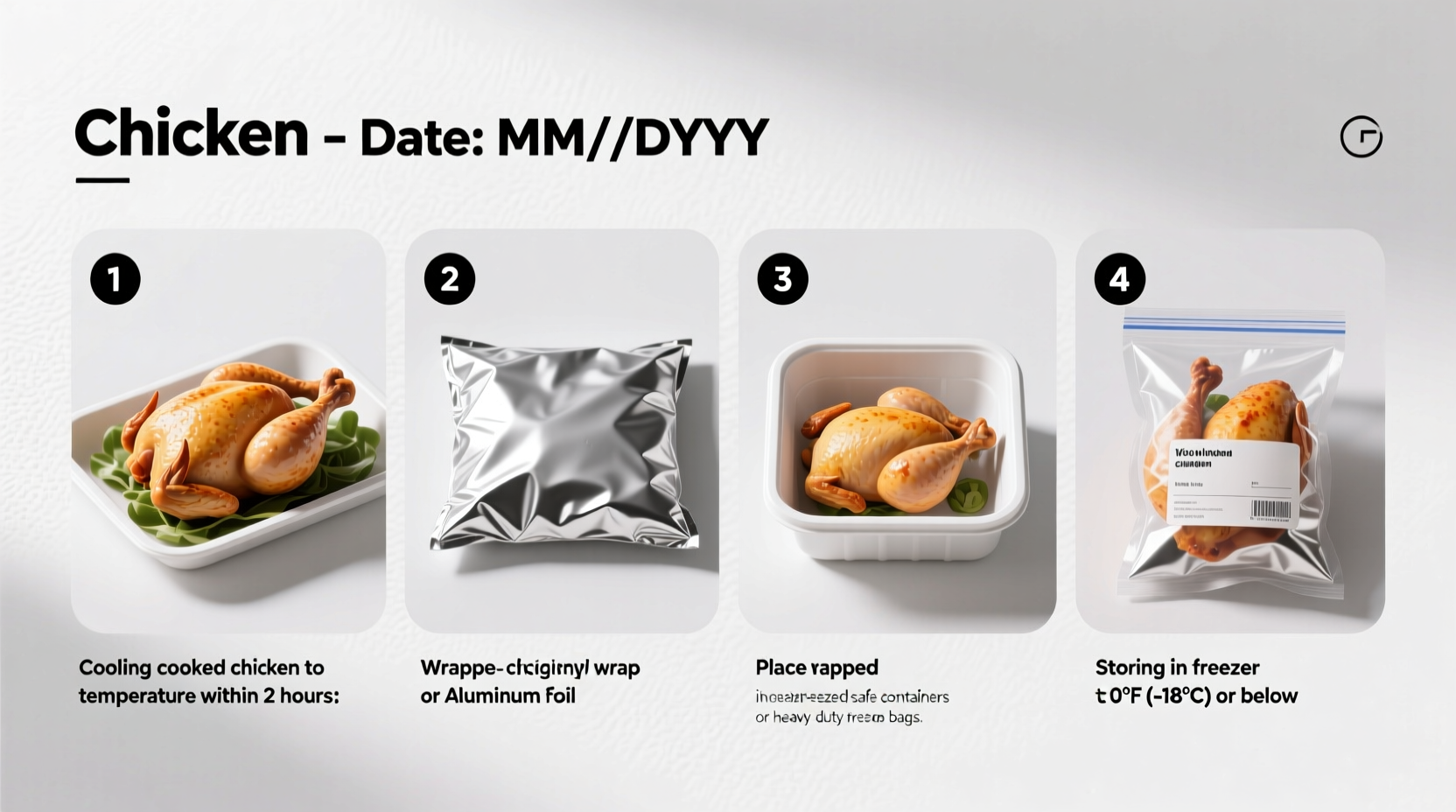Freezing cooked chicken properly preserves both safety and quality, preventing food waste while ensuring delicious meals later. Whether you've batch-cooked for the week or have leftovers from Sunday dinner, mastering this technique keeps your chicken safe to eat and maintains its texture and flavor for future meals.
Why Proper Freezing Technique Matters
Incorrectly frozen chicken develops freezer burn, absorbs odors, or becomes unsafe to eat. The USDA Food Safety and Inspection Service reports that improper food storage causes millions of foodborne illness cases annually. When you follow science-backed freezing methods, you'll enjoy chicken that tastes freshly cooked months later while eliminating food safety risks.
Step 1: Prepare Chicken for Freezing
Before touching your freezer, proper preparation ensures optimal results:
- Cool completely: Allow chicken to reach room temperature within 2 hours of cooking (1 hour if room temperature exceeds 90°F). Never place hot food directly in the freezer.
- Portion wisely: Divide into meal-sized portions using the USDA's portioning guidelines - typically 3-4 ounce servings for adults.
- Remove excess moisture: Pat chicken dry with paper towels to prevent ice crystals from forming during storage.
| Storage Method | Best For | Max Quality Duration | Air Exposure Risk |
|---|---|---|---|
| Vacuum sealing | Long-term storage | 6 months | Lowest |
| Freezer bags (air removed) | Most home uses | 4 months | Medium |
| Rigid containers | Liquids/sauces | 3 months | Medium-High |
| Aluminum foil + bag | Short-term storage | 2 months | High |
Step 2: Choose Your Freezing Method
Each storage method has specific advantages depending on your needs and equipment:
Air Removal Techniques That Prevent Freezer Burn
The water displacement method creates near-vacuum conditions using simple freezer bags. Submerge your sealed-but-not-quite-closed bag in water, allowing pressure to push air out before sealing completely. This technique, recommended by the National Center for Home Food Preservation, reduces air exposure by 95% compared to standard sealing.
Container Selection Guidelines
Use only containers specifically designed for freezer use. Regular containers often crack at low temperatures, compromising food safety. The FDA Food Code specifies that freezer-safe containers must maintain integrity at -22°F (-30°C). When using containers, leave 1/2 inch of headspace for liquid expansion during freezing.

Step 3: Label and Store Correctly
Organization prevents wasted food and ensures proper rotation:
- Label each package with contents and freezing date using waterproof marker
- Store at consistent 0°F (-18°C) or below - verify with freezer thermometer
- Arrange packages in a single layer until frozen solid (about 24 hours)
- Once solid, stack packages to maximize space
The USDA FoodKeeper app confirms that cooked chicken maintains peak quality for 4 months when frozen properly. While technically safe indefinitely at 0°F, quality degrades over time due to enzyme activity and moisture loss.
Step 4: Thawing and Reheating Safely
Improper thawing causes bacterial growth in the "danger zone" between 40°F and 140°F. Follow these evidence-based methods:
Recommended Thawing Methods
- Refrigerator thawing: Transfer to refrigerator 24 hours before use (8 hours per pound)
- Cold water method: Submerge sealed package in cold water, changing water every 30 minutes
- Microwave thawing: Use defrost setting and cook immediately after thawing
Never thaw chicken at room temperature or in warm water. The Journal of Food Protection documents that bacterial counts double every 20 minutes between 70°F and 125°F.
Reheating to Perfect Texture
Reheat to an internal temperature of 165°F measured with a food thermometer. For best results:
- Add moisture when reheating (broth, sauce, or water) to prevent drying
- Reheat in oven at 325°F covered with foil for even warming
- Avoid multiple freeze-thaw cycles which degrade texture and safety
Troubleshooting Common Freezing Issues
Even with proper technique, problems sometimes occur. Here's how to handle them:
Freezer Burn Prevention and Management
Freezer burn appears as grayish-brown leathery spots caused by air exposure. While safe to eat, affected areas have compromised texture. To minimize:
- Use the water displacement method for air removal
- Double-wrap delicate items like chicken breasts
- Consume within recommended timeframes
If freezer burn occurs, simply trim affected areas before reheating. The National Center for Home Food Preservation confirms that freezer burn doesn't indicate spoilage but does affect quality.
When Not to Freeze Cooked Chicken
Certain situations make freezing unsafe or impractical:
- Chicken left at room temperature longer than 2 hours (1 hour above 90°F)
- Previously frozen and thawed chicken that was cooked
- Chicken with visible spoilage signs (sour smell, slimy texture, mold)
- Chicken mixed with ingredients that don't freeze well (creamy sauces, mayo-based salads)
The Food and Drug Administration emphasizes that freezing stops but doesn't reverse bacterial growth. If chicken was mishandled before freezing, freezing won't make it safe.











 浙公网安备
33010002000092号
浙公网安备
33010002000092号 浙B2-20120091-4
浙B2-20120091-4